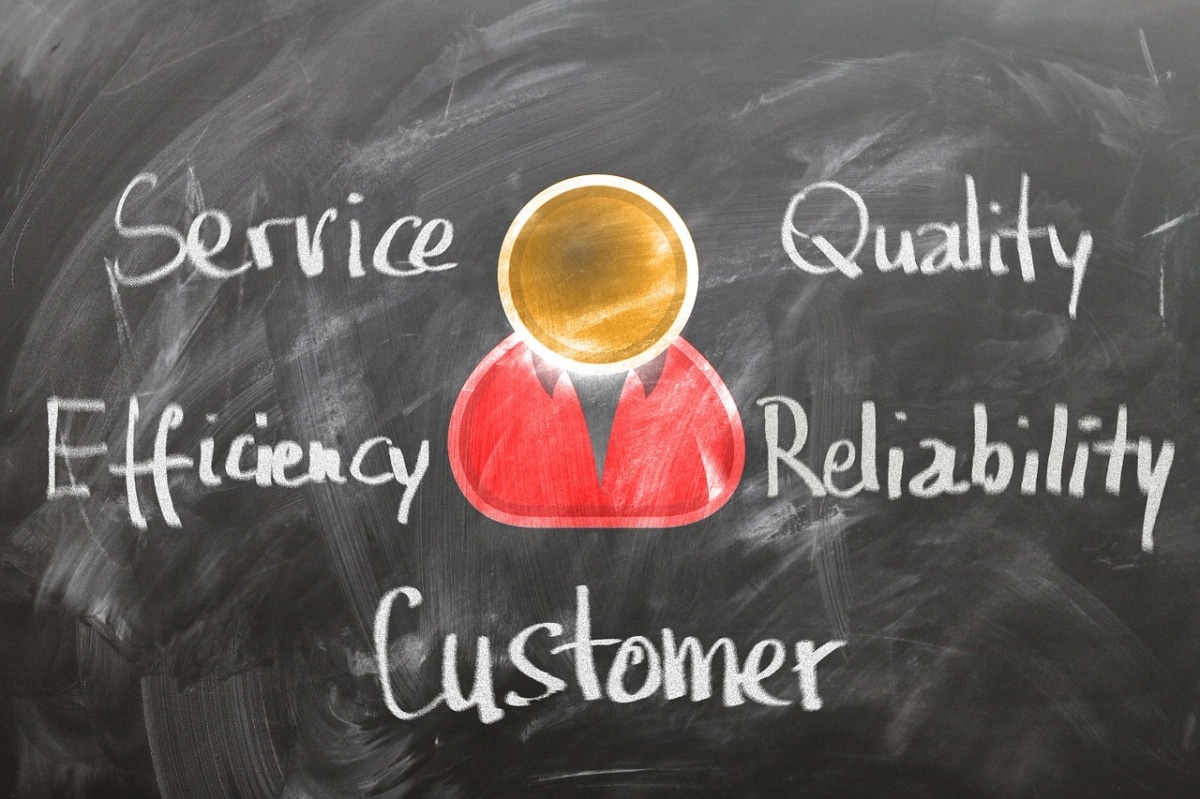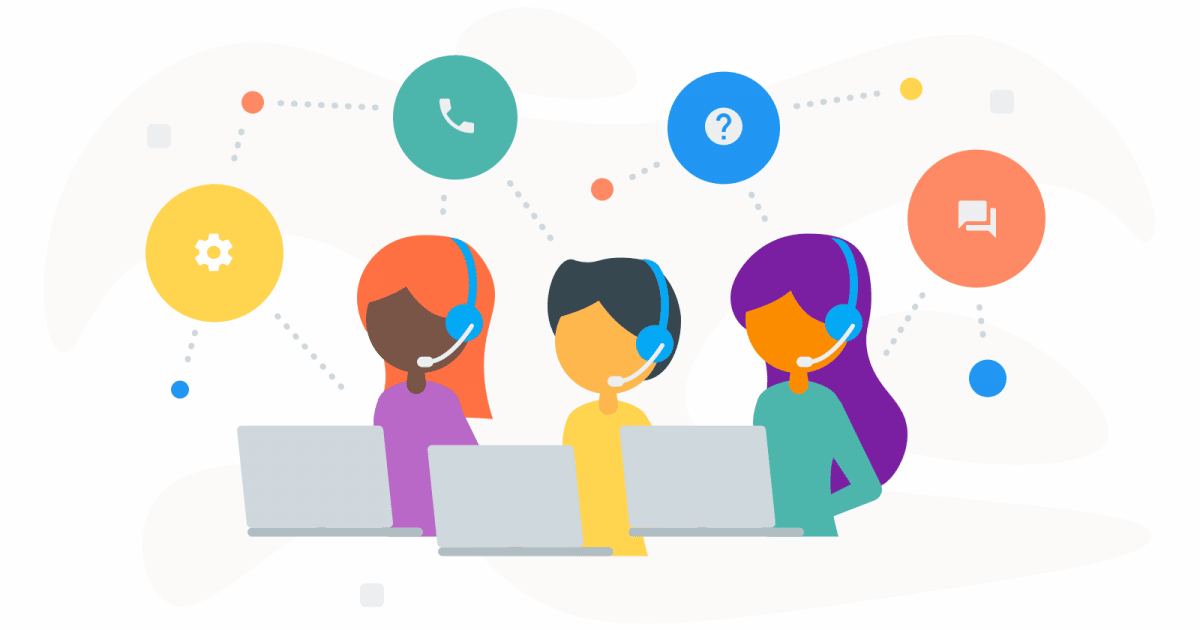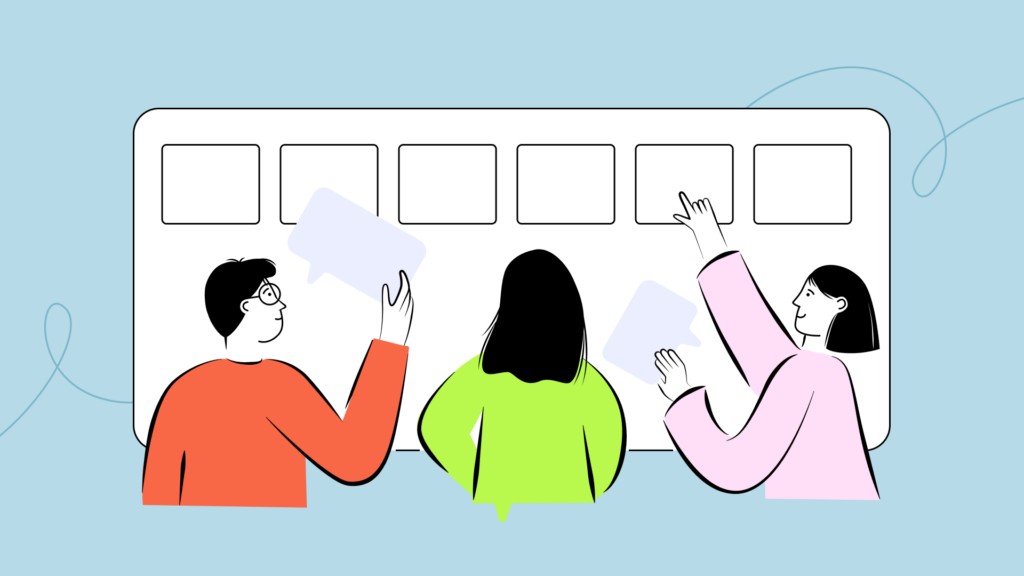
Customer service plays a crucial role in the sales cycle. In fact, 73% of customers* say customer experience is an essential factor when making a purchase.
But how can you be sure you’re driving consistent, high-quality customer service? We believe it’s by engaging in customer service training games, activities, and other role-playing scenarios. This way, you can transform your customer service team into customer advocates and superstars, whether they’re new hires or seasoned pros.
In this article, we explore 11 of the best customer service training activities to enhance your team’s skills, boost customer satisfaction, and improve their overall performance.
Key takeaways:
- Effective customer service training sessions can lead to higher customer satisfaction and loyalty.
- Training ideas include role-playing, feedback simulations, and service awards.
- CloudTalk’s advanced call center automation features like Call Monitoring and Agent Reporting can improve agent training and optimize real-time feedback.
Easily track and improve agent performance with CloudTalk.
*Forbes, 2024
Why Use Games and Activities for Customer Service Training?
Interactive learning methods offer an engaging way to train agents without it becoming mundane and uninspiring. By involving your team in games and activities instead of lengthy presentations, you can significantly improve their knowledge retention, skill application, and long-term performance.
Hands-on experiences create a deeper understanding of key concepts while making sure customer service agents can apply these skills in real-world scenarios.
Incorporating these training techniques will help your team develop essential skills that are crucial for delivering excellent customer service. Some soft skills they’ll develop through the methods below include:
- Problem-solving
- Active listening
- Conflict resolution
- Empathy
- Verbal and non-verbal communication
Let’s begin.
11 Games, Activities, and Training Ideas for Stellar Customer Service
We’ve curated the following activities to cover a wide range of essential customer service skills, from communication to problem-solving, to boost your customer team’s performance.
1. Role-Playing Scenarios
Role-playing scenarios simulate real-life interactions with potential customers. This means your agents can practice how they’d handle common challenges like dealing with an upset customer or upselling a product. These scenarios help develop crucial problem-solving and communication skills, giving agents the confidence to navigate tricky situations in real applications.
For example, a role-playing session might have someone act as an angry customer. The customer service representative has to hear their problem and provide a solution while remaining calm. This hands-on approach is great for employees to practice how they react in different situations in a safe and controlled environment.
2. Call Your Competitor
One of the best customer service training ideas is to have your agents call a competitor’s customer service line or sales department. This way, they can witness great customer service first-hand, take notes, and get new ideas for customer interactions. The main goal of this exercise is to gain insight into other companies’ techniques and strategies.
A representative might call to ask about their return policy and take notes of the response time, professionalism, and efficiency of the agent in resolving customer complaints. This exercise also encourages employees to think critically about what sets their service apart and where to improve.
3. Mystery Shopper Challenge
If you need a starting point to assess where your customer service team is currently at, you can run a mystery shopper exercise. In this scenario, you can hire a mystery shopper to call the customer service team and assess their performance. After, the customer will give you their write-up, and you can adjust training from there.
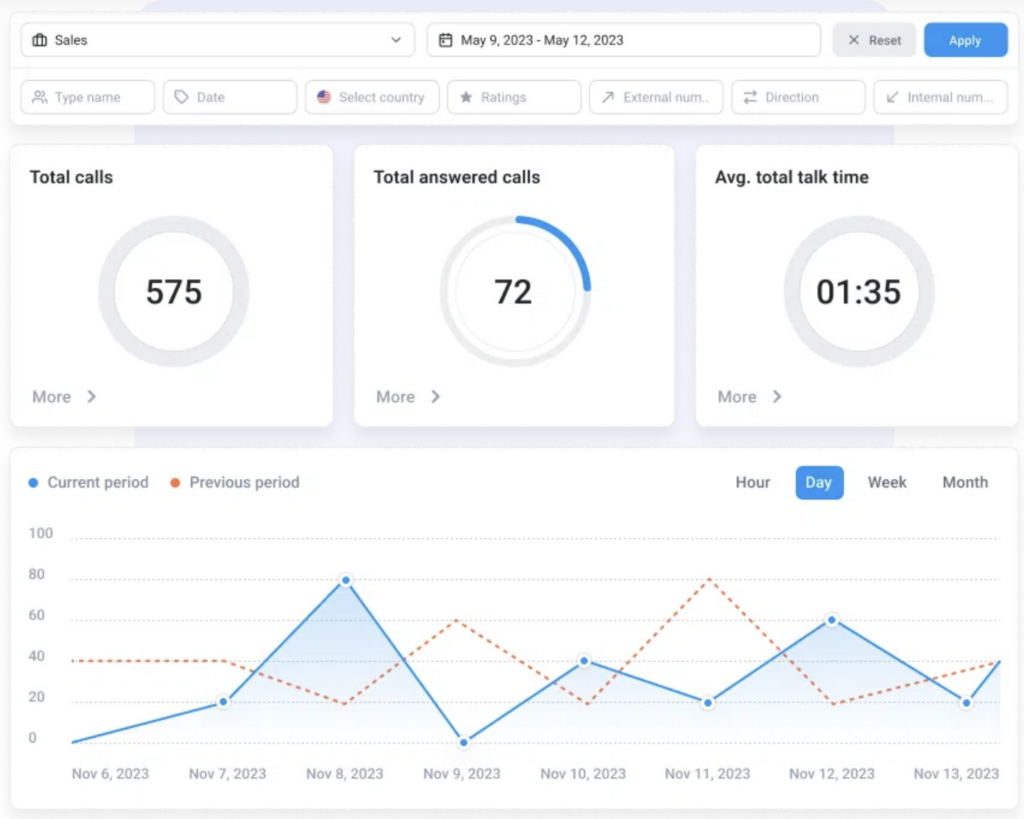
It’s designed to evaluate customer satisfaction, service quality, and responsiveness. It also offers agents a chance to practice in a real-world scenario and understand their strengths and room for improvement. A key advantage of this exercise is that it encourages employees to consistently deliver high-quality service because they can be evaluated at any point.
Pro Tip
Use CloudTalk’s call center analytics software to enhance your mystery shopping challenges with call center monitoring. With the Call Monitoring feature, supervisors can listen to live or recorded calls and offer real-time insights into employee performance.
The Real-Time Dashboard allows you to track key call center metrics like response time, customer satisfaction, and service quality. Meanwhile, Agent Reporting provides detailed performance evaluations, making it easier to identify areas your customer service representatives can improve on.
By using CloudTalk’s solutions, you can ensure your team is consistently delivering high-quality service and make adjustments to your training based on accurate data. Get a discount today.
4. Service Recovery Role-Play
Managing customer complaints effectively is a crucial part of being a customer service agent, and role-play explicitly focused on service recovery helps them practice this skill. The goal of this session is to enhance agents’ recovery strategies and conflict resolution abilities by having employees practice transforming a negative customer experience into a positive one.
This will strengthen their creativity and resilience when dealing with these challenging scenarios. For example, you can create a mock scenario where a customer is unhappy about something like a delayed delivery. In this role-play, the representative can practice calming the customer, offering compensation or a refund, and proposing how to handle this issue and make the customer happy.
5. Customer Journey Mapping
Customer journey mapping is different from the other customer service training ideas above because it takes a more analytical approach. It’s about understanding your current customer experience and finding a way to improve it. Start by breaking your agents into teams and having them create a visual map to outline every stage or touchpoint the customer goes through.
This should include the first time a customer interacts with the company and the last follow-up after their purchase. When your teams fully understand the customer journey, they can empathize with the customer more and adjust their service accordingly.
A typical example is mapping out a customer’s journey after they seek product support from a knowledge base. This helps identify key moments where the service can be improved to boost satisfaction. It could also look like mapping out potential areas that might cause frustration in customer onboarding.
6. Communication Skills Workshop
Communication workshops typically focus on both verbal and non-verbal communication techniques. This is crucial for customer agent success since you need to know how to gauge customer nuances through the phone.
Some exercises you can include in your workshops include active listening exercises, storytelling workshops, and feedback exchange sessions. These interactive activities are important for building effective communication and dealing with high-pressure situations while sharpening active listening, clear messaging, and interpreting non-verbal cues skills.
7. Customer Feedback Simulation
Simulating customer feedback is another type of role-playing, and it helps your team develop feedback management skills. During this exercise, have your employees analyze and respond to both positive and negative reviews without any real customer interaction. The objective here is to improve the team’s ability to address customer feedback in a way that ensures the customer is satisfied.
For example, you can simulate a fictional negative review and have the agent craft a response. Make sure the response acknowledges the issue while also offering a resolution.
8. Empathy Exercises
Empathy exercises are designed to help employees connect more deeply with customer needs. Empathizing with the customer makes them feel understood and helps your customer service agents provide better solutions. You might include activities like empathy mapping or walking in the customer’s shoes. The goal is to foster a customer-centric mindset, which requires more empathetic interactions.
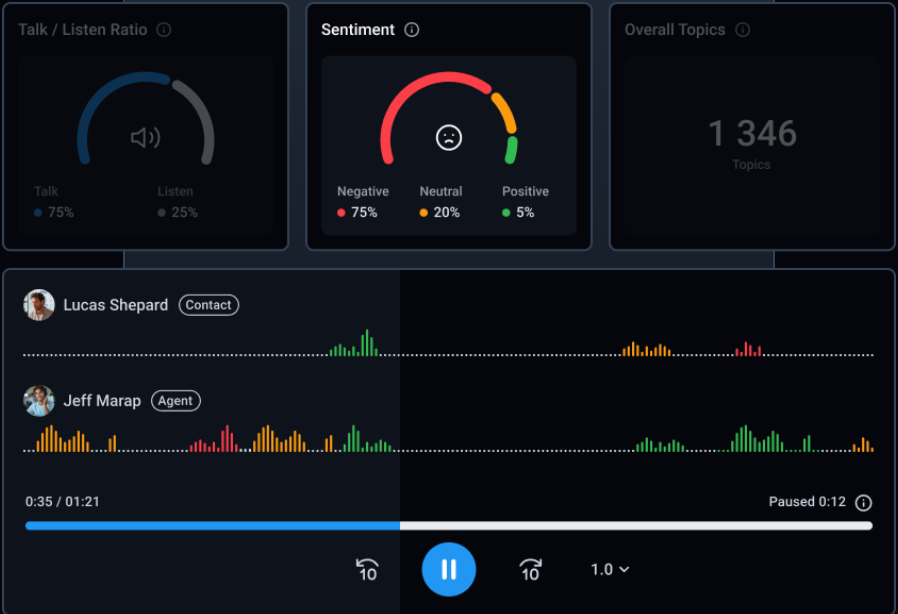
During an empathy map exercise, you should have your employees plot out a fake customer’s emotions, desires, and frustrations so they can better understand their situation. By role-playing as a customer facing challenges with the company’s products or services, you can better understand their perspective.
Pro Tip
CloudTalk supports empathy training for your customer service team with powerful features like Sentiment Analysis and Talk/Listen Ratio.
Using Sentiment Analysis, your team can gain real-time insights into the emotions and feelings expressed by customers during interactions, helping agents better understand and respond with empathy.
Meanwhile, the Talk/Listen Ratio feature ensures agents are actively empathizing and listening to customers by measuring their engagement during calls.
9. Service Excellence Awards
Companies can implement service excellence awards to motivate employees and reinforce high standards. Start by reviewing a number of customer service calls a month to keep track of who is providing the best service. Then, give awards to team members who provide exceptional customer service, or offer monthly or quarterly incentives.
For example, if you have an employee who goes above and beyond to satisfy customers, give them public recognition or a reward to recognize them. You can use customer feedback, peer nominations, or specific call metrics and KPIs to determine who wins an award.
10. Product Demonstration
It’ll be hard for your customer service rep to empathize with a customer or offer the best solution if they don’t fully understand the product. To gauge their level of understanding while also supporting customer education, you can host a product demonstration.
Have agents give a ten to fifteen-minute product demonstration walking a hypothetical customer through everything they need to know to start using the product successfully.
This way, you make sure employees can effectively and clearly communicate the value and functionality of your product and service. During the presentation, they should include things like:
- How to navigate the interface
- How to use key features
- How to troubleshoot common issues
- What features they might find most useful
Have the reps include a Q&A segment at the end of the presentation so they can speak to the product’s capabilities and benefits.
11. No “No’s” Allowed
The no “no’s” allowed activity might be more challenging for your customer service reps because it requires them to interact with their customers and colleagues without using the word no. This role-playing exercise enhances their ability to handle objections and requests positively and constructively which helps the customer feel like they’re always right.
For example, if a representative receives a request from a customer that they can’t handle, they can find another way to frame the response. If a customer asks if they can return a product past the return window, the customer agent shouldn’t say, “No, we can’t accept returns after this period.” Instead, they can say something like: “While the standard return policy has ended, let’s explore other options to resolve this issue. We could offer a discount on your next purchase or assist with an exchange.”
While this activity requires strong creativity and communication skills, it’ll help agents maintain a positive tone throughout the customer interaction. One way to get it right is using CloudTalk’s Call Center Scripts.
These scripts help agents avoid negative language and refine and practice their responses. This way, they’re always prepared with a positive alternative for a customer.
Boost Customer Service With These Engaging Training Ideas
Incorporating customer service training ideas like games, activities, and interactive training methods into your customer service training program can yield significant results. From building empathy and improving communication skills to understanding products better, these exercises make training fun and leave a lasting impact on how your team interacts with customers.
For instance, test agents’ creativity with No “No’s” Allowed, empathy mapping, or role-playing. These activities not only challenge your customer service agents but also foster more effective customer interactions.
And, when you partner with CloudTalk, you get all the features you need to train and develop agents across activities and scenarios. With tools like Call Monitoring, Agent Reporting, and Sentiment Analysis, you can track progress, provide real-time feedback, and refine training efforts. This way, you can enhance your customer service representative’s performance while boosting customer experience.
Elevate your customer service training with CloudTalk.



